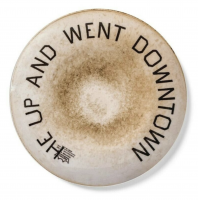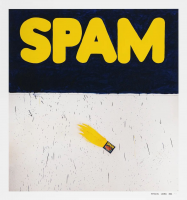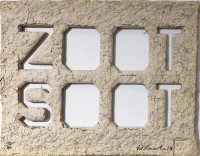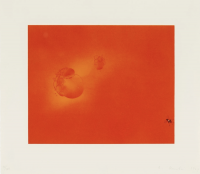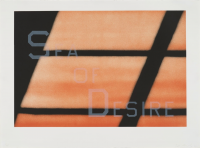
Details
Artist
Styles
// Ed Ruscha's Angel (2014) is a limited edition lithograph that showcases his signature exploration of text and imagery. The artwork features the word Angel in a stylized, ethereal font, subtly emerging against a soft gradient background of blue and white, reminiscent of a sky. The use of light and shadow gives the impression of an illuminated message, almost as if it were cast through mist. Ruscha’s minimalist approach emphasizes the spiritual and atmospheric quality of the piece, inviting contemplation of its symbolism and serene aesthetic.
Angel, 2014
form
Medium
Size
58.4 x 40.6 cm
- Inches
- Centimeters
Edition
Price
Details
Artist
Styles
// Ed Ruscha's Angel (2014) is a limited edition lithograph that showcases his signature exploration of text and imagery. The artwork features the word Angel in a stylized, ethereal font, subtly emerging against a soft gradient background of blue and white, reminiscent of a sky. The use of light and shadow gives the impression of an illuminated message, almost as if it were cast through mist. Ruscha’s minimalist approach emphasizes the spiritual and atmospheric quality of the piece, inviting contemplation of its symbolism and serene aesthetic.
- Recently Added
- Price (low-high )
- Price (high-low )
- Year (low-high )
- Year (high-low )
Ed Ruscha
Wen Out For Cigrets N Never Came Back, 2017
Sculpture / Object
Bronze
USD 150,000 - 170,000
Ed Ruscha
Cash For Tolls 1 (from Rusty Signs), 2014
Limited Edition Print
Mixed Media
USD 20,000 - 25,000
Ed Ruscha
Cash For Tolls 2 (from Rusty Signs), 2014
Limited Edition Print
Mixed Media
USD 20,000 - 25,000
Ed Ruscha
Dead End II (from Rusty Signs), 2014
Limited Edition Print
Mixed Media
USD 20,000 - 25,000
Ed Ruscha
Dead End III (from Rusty Signs), 2014
Limited Edition Print
Mixed Media
USD 20,000 - 25,000
Ed Ruscha
For Sale 17 Acres (from Rusty Signs), 2014
Limited Edition Print
Mixed Media
USD 20,000 - 25,000
What is pop-art?
Pop Art is an art movement that began in Britain in 1955 and in the late 1950s in the U.S. It challenged traditional fine arts by incorporating imagery from popular culture, such as news, advertising, and comic books. Pop Art often isolates and recontextualizes materials, combining them with unrelated elements. The movement is more about the attitudes and ideas that inspired it than the specific art itself. Pop Art is seen as a reaction against the dominant ideas of Abstract Expressionism, bringing everyday consumer culture into the realm of fine art.








